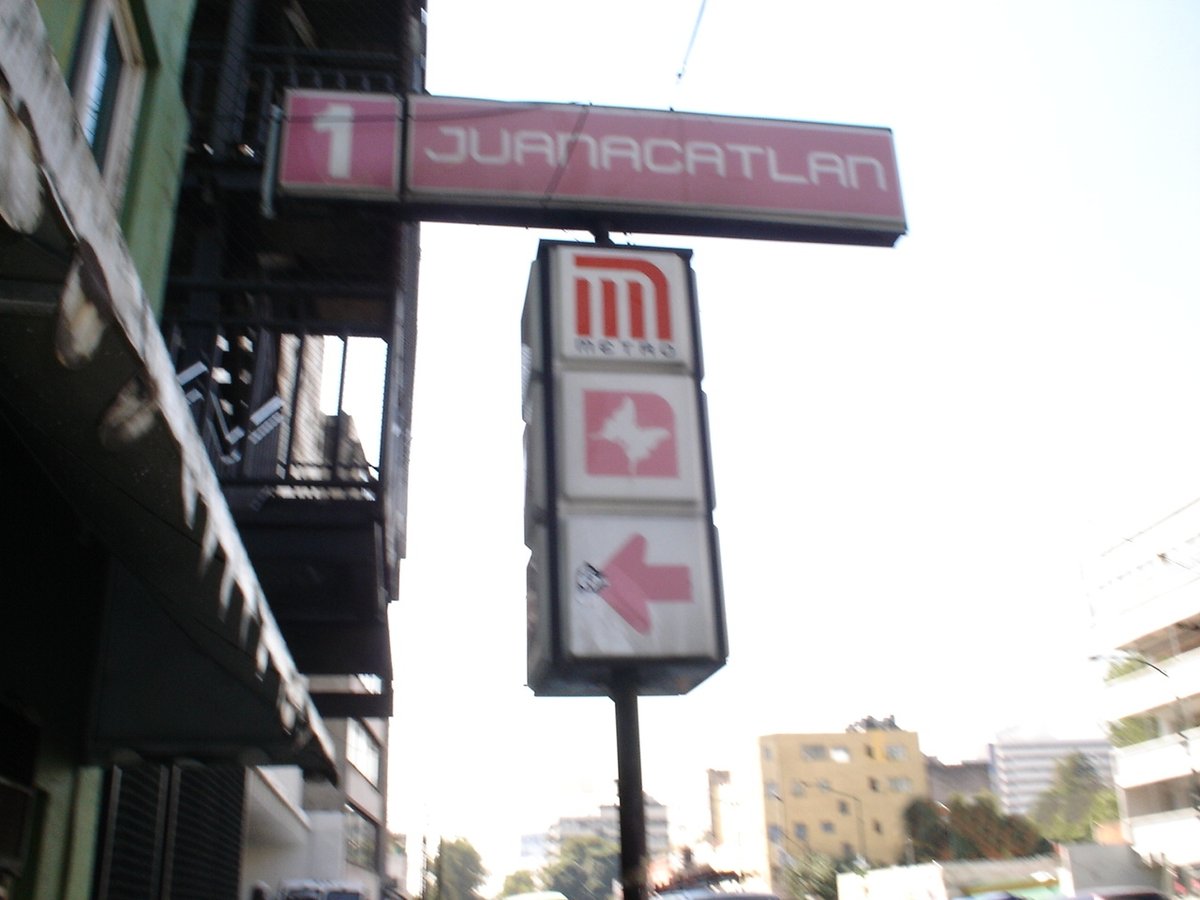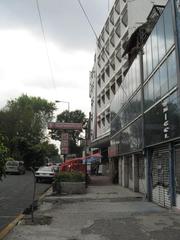
Juanacatlán: Visiting Hours, Tickets, and Historical Sites in Mexico City
Date: 14/06/2025
Introduction
Juanacatlán, nestled in the dynamic expanse of Mexico City, is a distinctive intersection of history, culture, and urban life. With roots extending back to pre-Hispanic times, its name—derived from the Nahuatl word for “place of reeds”—evokes the marshy landscapes that once defined this area of the Valley of Mexico. Over centuries, Juanacatlán has evolved from a Mesoamerican settlement into a modern neighborhood, seamlessly blending its indigenous heritage with colonial and contemporary influences. Today, Juanacatlán serves as both a vital transit hub and a gateway to some of Mexico City’s most treasured attractions, offering visitors an immersive experience of the city’s layered past and vibrant present (mexicocity.cdmx.gob.mx; mexicodave.com).
This comprehensive guide details Juanacatlán’s historical and cultural significance, practical information for visitors, travel tips, accessibility notes, and recommendations for nearby attractions, ensuring you have all you need for a memorable experience in Mexico City.
Table of Contents
- Historical Overview
- Cultural Significance and Community Life
- Juanacatlán Metro Station: Access and Connectivity
- Architectural Heritage and Urban Landscape
- Key Attractions: Visiting Hours and Tickets
- Travel Tips and Safety
- Accessibility Information
- Guided Tours and Special Events
- Frequently Asked Questions (FAQs)
- Conclusion and Further Resources
Historical Overview
Pre-Hispanic Origins
The Valley of Mexico, where Juanacatlán is situated, was once a region of interconnected lakes and chinampas (artificial agricultural islands) vital to civilizations such as the Mexica (Aztecs). Juanacatlán’s name, meaning “place of reeds,” reflects its origins in these marshlands. The area supported dense populations and agricultural productivity, contributing to the rise of Tenochtitlan, the Aztec capital (mexicocity.cdmx.gob.mx).
Colonial Transformation
Following the Spanish conquest in 1521, the landscape underwent dramatic changes. Colonial authorities drained the lakes, built churches and haciendas, and established new settlements, integrating Juanacatlán into the expanding urban fabric of Mexico City (visit-mexico.mx). The blending of indigenous and colonial cultures remains evident in local festivals, architecture, and community life.
Modern Integration
The 19th and early 20th centuries brought significant modernization, including the construction of Paseo de la Reforma and railway lines, further integrating Juanacatlán with the city’s growing infrastructure. Landmarks such as Chapultepec Castle and Park became symbols of national identity and modernization (worldhistoryedu.com; nomadicmatt.com).
Cultural Significance and Community Life
Juanacatlán’s location near Chapultepec Park provides access to world-class museums, cultural centers, and green spaces. The neighborhood is also adjacent to vibrant districts like Condesa and Roma, known for their Art Deco architecture, nightlife, and culinary scenes (thebrokebackpacker.com).
Community life here is marked by a blend of tradition and modernity—local festivals, artisan markets, and a robust calendar of cultural events reinforce Juanacatlán’s role as a lively, inclusive neighborhood.
Juanacatlán Metro Station: Access and Connectivity
Opened in 1969 on Line 1 (the Pink Line), Juanacatlán Metro Station dramatically improved access to this area. The station’s iconography pays homage to the local pre-Hispanic heritage with depictions of reeds and water (mexicocity.cdmx.gob.mx).
- Operating Hours: Daily, 5:00 AM – 12:00 AM
- Ticket Price: 5 MXN per ride; tickets are available at station booths and vending machines.
Note: As of November 2023, the station may undergo modernization works—check current operational status before your visit (Wikipedia).
Architectural Heritage and Urban Landscape
While Juanacatlán is primarily residential and transit-oriented, its surroundings offer striking examples of Mexican architectural evolution:
- Chapultepec Castle: Built in 1725, it is the only royal castle in North America, featuring neoclassical and neo-Gothic elements (nomadicmatt.com).
- Colonial Churches and Mansions: The area showcases colonial-era religious and domestic architecture.
- Modernist Buildings: San Miguel Chapultepec and Condesa highlight 20th-century architectural trends.
Key Attractions: Visiting Hours and Tickets
Chapultepec Castle
- Hours: Tuesday–Sunday, 9:00 AM – 5:00 PM
- Tickets: Approximately 85 MXN for adults; discounts for students and seniors
- Accessibility: Ramps and elevators available
Chapultepec Park Museums
- National Museum of Anthropology: Open daily except Monday, 9:00 AM – 7:00 PM
- Museum of Modern Art / Tamayo Museum: Check official websites for current hours
Juanacatlán Metro Station
- Hours: 5:00 AM – 12:00 AM daily
- Tickets: 5 MXN per ride
Guided Tours
Several operators offer historical and cultural walking tours in the area. Special events and festivals are hosted throughout the year—consult local tourism boards for details.
Travel Tips and Safety
- Best Time to Visit: March–May and September–November for pleasant weather
- Getting There: Metro Line 1; also accessible by bus, taxi, or rideshare
- Safety: Juanacatlán is generally safe, but use standard precautions—secure valuables, avoid isolated areas after dark, and use authorized transportation (Asher Fergusson)
- Health: Be mindful of altitude (2,240 meters); stay hydrated and take it easy on your first day (Travel.gc.ca)
- Money: Carry some cash, but credit/debit cards are widely accepted. Use ATMs inside banks or shopping centers.
Accessibility Information
- Metro and Public Spaces: Some metro stations are fully accessible with elevators and ramps, but sidewalks may be uneven.
- Chapultepec Park and Museums: Generally accessible; check specific venues for details.
Guided Tours and Special Events
- Walking Tours: Focus on history, art, and food in Juanacatlán, Chapultepec, Condesa, and Roma.
- Chapultepec Park: Hosts outdoor activities, cultural performances, and artisan markets, especially on weekends (Let’s Travel to Mexico).
Frequently Asked Questions (FAQs)
Q: What are the Juanacatlán Metro Station hours?
A: 5:00 AM – 12:00 AM daily; check for temporary closures due to modernization.
Q: How do I buy tickets for Chapultepec Castle?
A: Purchase onsite or online; standard price is about 85 MXN.
Q: Is Juanacatlán safe for tourists?
A: Yes, with standard precautions—be vigilant, especially in crowded areas.
Q: Are guided tours available?
A: Yes, multiple tour operators offer walking and cultural tours.
Q: What is the best time of year to visit?
A: Dry season, November–April, for optimal weather.
Conclusion and Further Resources
Juanacatlán stands as a vibrant gateway to the history and culture of Mexico City. With its convenient metro access, proximity to Chapultepec Park, and lively neighboring districts, Juanacatlán is ideal for both first-time and repeat visitors seeking a blend of city life, history, and cultural exploration.
For up-to-date information, guided tours, and exclusive travel tips, download the Audiala app and follow our social media channels. Your journey through Mexico City’s rich past and dynamic present starts here.
Sources
- This article references and is informed by the following resources:
- Historical Timeline of Mexico City, 2023, Mexico City Government
- Best Places in Mexico City, 2023, Mexico Dave
- Mexico City Travel Guide, 2024, Nomadic Matt
- Mexico City Attractions, 2023, Visit Mexico
- Mexico City Itinerary, 2024, The Broke Backpacker
- Most Significant Landmarks in Mexico City, 2023, World History Edu
- Juanacatlán Metro Station - Wikipedia
- Time Out Mexico City - Best Things to Do
- Asher Fergusson - Mexico Safety Tips
- Travel.gc.ca - Mexico
- Let’s Travel to Mexico - Mexico City in June











































































































































































